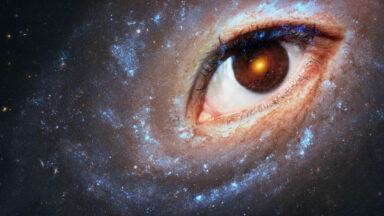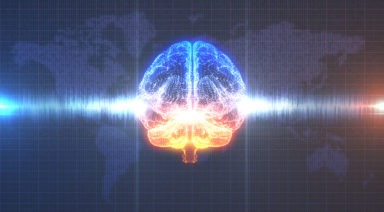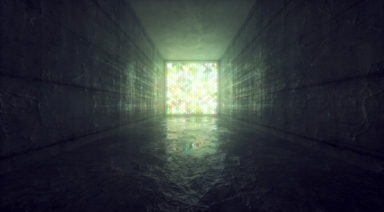How to Remote View

What is Remote Viewing?
Remote viewing is defined as the ability to acquire accurate information about a distant or non-local place, person or event without using your physical senses or any other obvious means. It’s associated with the idea of clairvoyance and sometimes called “anomalous cognition” or “second sight.” The difference between natural psychic receptivity and remote viewing is that the latter is a trained skill that the average person can learn to do.
How Does Remote Viewing Work?
Remote viewing operates on the principle that every person has the innate ability to access information beyond the reach of the five senses. This practice involves quieting the mind, tuning into subtle perceptions, and allowing information from distant locations or events to come to consciousness. The process begins with setting an intention to view a specific target, which could be a place, person, or event. Practitioners then enter a relaxed, focused state, often described as a light meditative state, where they can receive impressions. These impressions may come through as images, sensations, or intuitive feelings. The outcomes of remote viewing sessions vary; some may yield strikingly accurate details, while others offer more abstract or symbolic insights. With consistent practice, remote viewers can refine their abilities, becoming more attuned to the subtle signals the mind perceives from beyond the physical senses.
Assignment: Increase Your Sensitivity to Unconscious Information
About 80% of the sensory information you experience each moment is generated by your brain. To save energy and time, your mind makes its best guess about what’s going on around you, using a small sampling of the environment. When you practice remote viewing, you’re attempting to describe very subtle information that’s much weaker than your conscious perception. Your assignment is to increase sensitivity to subtle information and learn how to collect unconscious information before your conscious mind interferes.
Spend time each day considering the sensory information in your immediate environment. Notice your surroundings, including the range of colors, sounds and smells. Take a second look: more presence in the moment increases sensitivity to subtle information.
Try Your Eyes at Remote Viewing
1. Select a range of targets
Ask a friend or family member (aka remote viewing assistant) to select 5-10 pictures. Ask them to cut the images from magazines and paste them on sheets of blank, white paper, with one picture per sheet. The images should be real-world pictures, such as people, architecture, nature, etc. Ask them not to pick a target picture that may be offensive or disturbing to the viewer.
2. Ask your assistant to put the images in an envelope
Ask your remote viewing assistant to stack the images in a manilla envelope face down and say absolutely nothing about them to you. You’ll view them one at a time, getting feedback after each session from the facedown target at the top of the pile.
3. Quiet your mind
You want as little mental noise as possible.
4. Let go
Write down the date, time and any ideas you want to let go of that may distract you while viewing.
5. Call the first target to mind
Begin the session by describing the most basic impressions you have of the first target site, event or person. What do you feel is the predominant thing in the target. Is it natural or artificial? Surrounded by land or water? Write several descriptors down.
6. Do not to second guess yourself
Write down the first thing that comes to your mind. The fainter, the better. Just make sure you write down the information as descriptively as possible and don’t judge anything.
7. Connect the dots unconsciously
Information is coming from your mind and autonomic nervous system. The idea is that your unconscious already knows everything there is to know about the target, it just has to communicate that to your conscious mind. It does that through your body with very subtle sensations and feelings.
8. Describe the basics
Write down sensory information that comes up, like visuals, smells, tastes and temperatures. You may start perceiving sizes, shapes and patterns — also known as dimensionals. You may even start to feel an emotional reaction to the target.
9. Draw a sketch of the target
Take your time and don’t worry about how your sketch looks.
10. Find a bird’s eye view
Imagine yourself floating several hundred feet over the target area. Is there anything surprising about the target that you can perceive? Make a note of your final impressions about the target.
11. End the session
Write down the time and a brief summary of what you perceived.
12. Get feedback
Pull the top photo from the envelope and see how you did. Take your time to really look at the colors and shapes of the image and compare it to your notes. You may be surprised at the results.
13. Review and repeat
If you didn’t connect with anything in the photo, don’t despair. The main point of RV is to learn about yourself, not just to be accurate. Remember that remote viewing is an ability you may cultivate. Repeat the process above for the remaining targets in the envelope.
14. Let go of being right
Most importantly, have fun.
How to Practice and Learn Remote Viewing
Learning remote viewing is like developing any other skill: it requires patience, practice, and a willingness to embrace the unknown. While it may seem mysterious at first, the steps to practice remote viewing are straightforward and can be approached methodically. Below are some key subtopics to guide you through the learning process.
Astral Journey: What It Is, How to Do It, and What You Can Discover

An astral journey is a fascinating practice in which consciousness detaches from the physical body to explore the astral plane, a dimension of existence beyond the tangible world. In this article, we will delve into how an astral journey can be consciously induced, explore the transformative benefits it offers, and demystify the risks commonly associated with this ancient experience.
Table of Contents
- What Is an Astral Journey and What Is It For?
- Differences Between an Astral Journey and a Lucid Dream
- Step-by-Step Guide for a Safe Astral Journey
- How to Return from an Astral Journey
- Benefits of Astral Travel
- Dangers of Astral Travel
- Advancing in Astral Travel Practice
- Integrating Astral Travel into Daily Life
What Is an Astral Journey and What Is It For?
An astral journey is an experience in which consciousness separates from the physical body and moves through the astral plane, a non-material dimension that coexists with the physical world. Although many people experience it unconsciously while sleeping, it is possible to learn how to consciously and voluntarily induce these journeys through specific techniques of relaxation, meditation, and visualization.
This practice allows individuals to explore realities beyond the physical senses. Those who have had conscious astral journey experiences often describe an expansion of perception, encounters with other forms of consciousness, and access to information that is not available in the usual waking state.
The astral journey can be a tool for spiritual development and self-knowledge. By transcending the limits of the physical body, the practitioner can gain a deeper understanding of the nature of being, overcome the fear of death, and strengthen the connection with their spiritual essence.
In the third season of Mystery Teachings, available on Gaia, an entire episode is dedicated to astral journeys. There, Theresa Bullard shares effective techniques for initiating in the astral plane, addressing what should and should not be done, and demystifying several myths associated with the journey through the astral realms.
Differences Between an Astral Journey and a Lucid Dream
Although they may seem similar, an astral journey and a lucid dream are distinct experiences. In a lucid dream, the person becomes aware that they are dreaming and can control certain elements of the dream, but remains within the dream plane generated by the mind. In contrast, an astral journey involves the separation of consciousness from the physical body to explore a real and external plane, different from the internal world of dreams.
Additionally, the purpose and experience also differ. While lucid dreaming often has a recreational or symbolic component, the astral journey has a more experiential and spiritual nature. The level of clarity, intensity, and perception of reality in the astral plane is notably higher than in dreams, and the experiences obtained can have a profound impact on the practitioner’s daily life.
Step-by-Step Guide for a Safe Astral Journey
To have a safe astral journey, it is essential to follow a structured practice that combines mental preparation, physical relaxation, and visualization techniques. In Mystery Teachings, Theresa Bullard presents a progressive method that can be integrated into the daily routine as training. This step-by-step guide helps to induce astral projection gradually, consciously, and safely, allowing the practitioner to explore the astral plane with greater clarity and confidence.
- Preparatory meditation: Dedicate 15 minutes a day to meditate with your back straight. This posture favors the energy flow through the chakras and allows you to reach a receptive mental state.
- Initial visualization: Observe a white dot on a black background or vice versa. Then close your eyes and try to keep a clear mental image of the dot.
- Daily visual training: Practice this visualization every day for a week. This strengthens concentration and trains the mind to sustain images in deep relaxation states.
- Expansion of the dot: In the second week, mentally expand the visualized dot until it transforms into a large space. This space represents the threshold between the physical and the astral plane.
- Tunnel formation: Imagine that this space turns into a tunnel connecting both planes. Visualize yourself entering this transitional tunnel with your consciousness.
- Visualized destination: At the end of the tunnel, mentally create a specific place you want to reach. Keep your intention clear and use that goal as an anchor for the astral experience.
- Conscious movement: Move through the astral plane using the speed of thought. This form of movement allows you to explore the environment fluidly and without physical effort.
How to Return from an Astral Journey
The return to the physical body after an astral journey usually occurs naturally, as consciousness is permanently connected to the body through what many practitioners describe as the “silver cord.” In most cases, it is enough to direct attention toward the physical body or internally express the intention to return for the process to occur immediately. This reconnection is usually smooth, although some people may experience sensations of vibration or a slight jolt upon returning.
However, there are simple techniques that can facilitate a more conscious and gradual return. Slightly moving the fingers of the hands or feet, taking a deep breath, or visualizing the physical body as an anchoring point are effective methods to reintegrate without abruptness. With practice, the return to the body becomes increasingly natural, allowing the experience to be concluded in a balanced way and wakefulness to be resumed with clarity and stability.
Benefits of Astral Travel
Astral travel offers a wide range of spiritual and personal benefits, allowing practitioners to explore beyond physical limitations and gain new perspectives on life and existence. Reaching these states of consciousness can result in a profound sense of liberation and knowledge, alleviating fears such as the fear of death and strengthening the connection with the higher self and spiritual dimensions.
- Expansion of consciousness: Astral travel allows one to experience a broader reality beyond daily life, promoting greater mental openness and flexibility in thinking.
- Understanding life after death: Practicing astral projection can provide comfort and insight into what might exist beyond physical life, reducing the fear of death.
- Development of psychic abilities: Through astral travel, some people report an increase in their intuitive and psychic abilities, such as clairvoyance or extrasensory perception.
- Emotional healing: Consciously revisiting past experiences from an astral perspective can provide new understanding that helps in the emotional healing process.
- Increased creativity: Astral travel can inspire individuals by giving them access to visions and ideas beyond the reach of conventional thought.
Dangers of Astral Travel
Although astral travel is safe, there are certain myths that may cause concern among practitioners. It is important to clarify these myths to ensure that participants feel comfortable and secure during their astral experiences. Understanding that these “dangers” are largely unfounded can help practitioners approach astral travel with confidence and peace of mind.
- Fear of not returning to the physical body: A common myth is the fear of getting stuck in the astral plane and not being able to return to the physical body. However, the so-called “silver cord,” which connects the astral body to the physical body, is not something that can be broken. Instead, it is a metaphorical connection that always ensures the return to the body.
- Encounters with negative entities: Some practitioners express concern about encountering malicious entities during their travels. Protecting oneself with light visualizations and setting clear and firm intentions for safety before the journey can help avoid these experiences and ensure a positive astral environment.
- Disorientation and fear: For beginners, it is common to feel some disorientation or fear when exploring astral experiences for the first time. These feelings are usually mild and can be easily managed with practice and preparation. Learning control techniques and cultivating a positive mental environment before starting the journey can help overcome these moments and improve the overall experience.
Advancing in Astral Travel Practice
For those interested in deepening their astral travel practice, it is essential to develop a consistent routine and employ advanced meditation and visualization techniques. As practitioners gain more experience, they can begin to explore various aspects of the astral plane with greater control and purpose. This includes learning to navigate to specific locations, interact with different spiritual entities, and receive teachings or guidance.
Additionally, sharing experiences with a community of practitioners can be invaluable. Joining groups or workshops where techniques and personal experiences are discussed helps validate and enrich one’s journey in astral travel. The guidance of an experienced mentor can also be a great advantage, offering the opportunity to learn through direct teaching and receive feedback that is crucial for personal and spiritual growth in this practice.
Integrating Astral Travel into Daily Life
Integrating astral travel into daily life means more than just having out-of-body experiences; it involves applying the perceptions and teachings obtained during these journeys to everyday physical existence. For example, insights gained about personal challenges or behavioral patterns can be used to improve relationships, make more informed decisions, and cultivate greater inner peace.
On the other hand, regularly practicing astral travel can foster a sense of spiritual connection and purpose that transcends mundane activities. This may manifest as greater empathy toward others, a commitment to service or community, and an interest in additional spiritual practices that complement personal growth. For those who deeply integrate these practices, astral travel becomes a way of life that fully embraces the multidimensional nature of human existence.




































